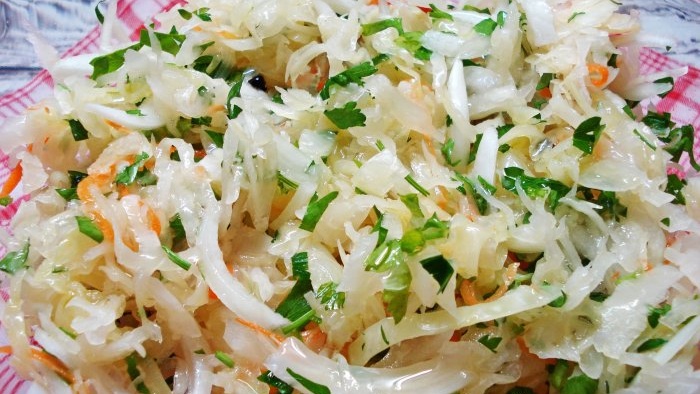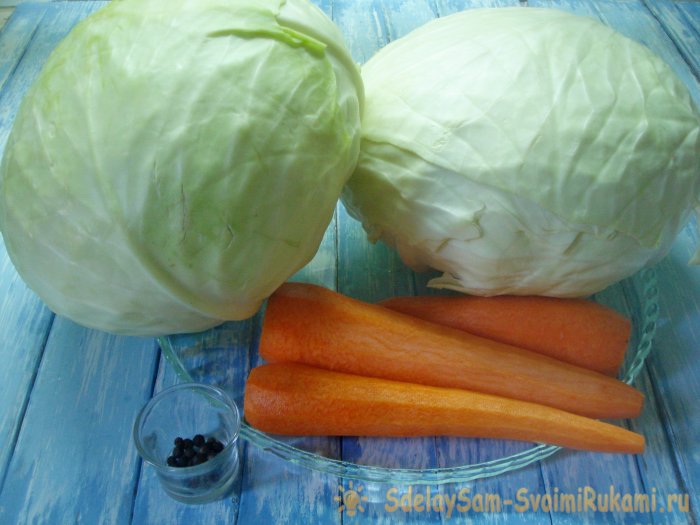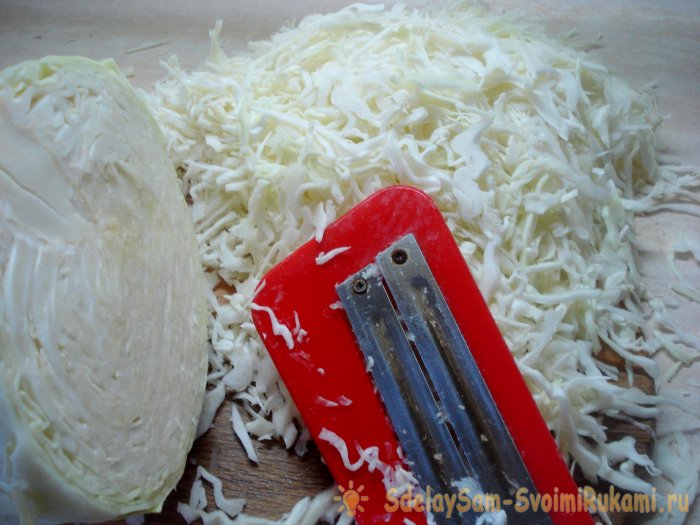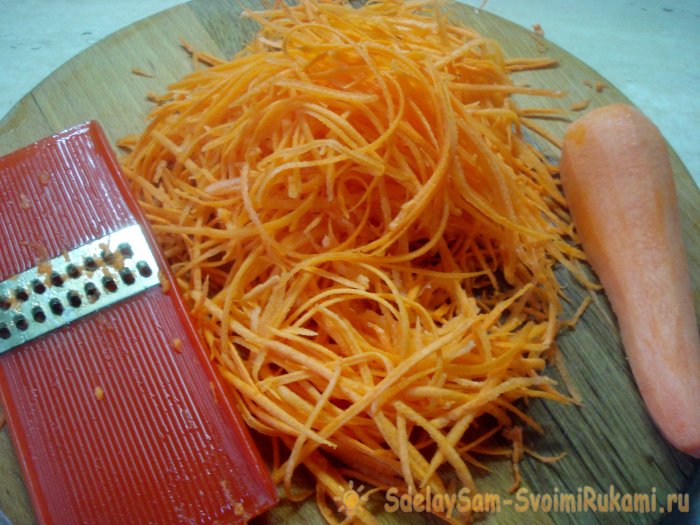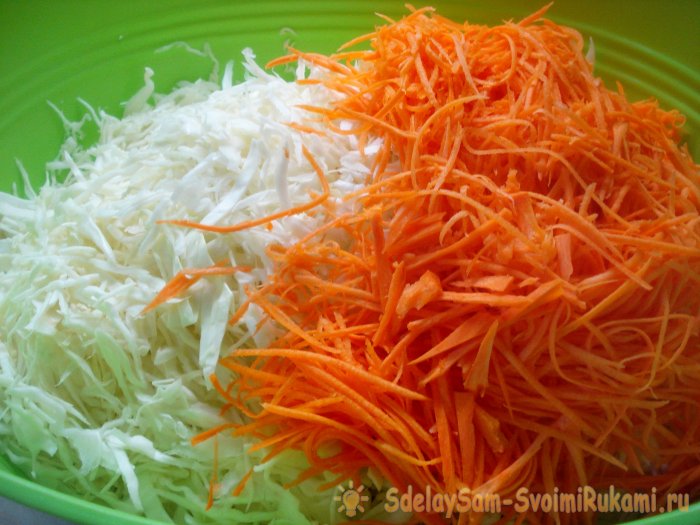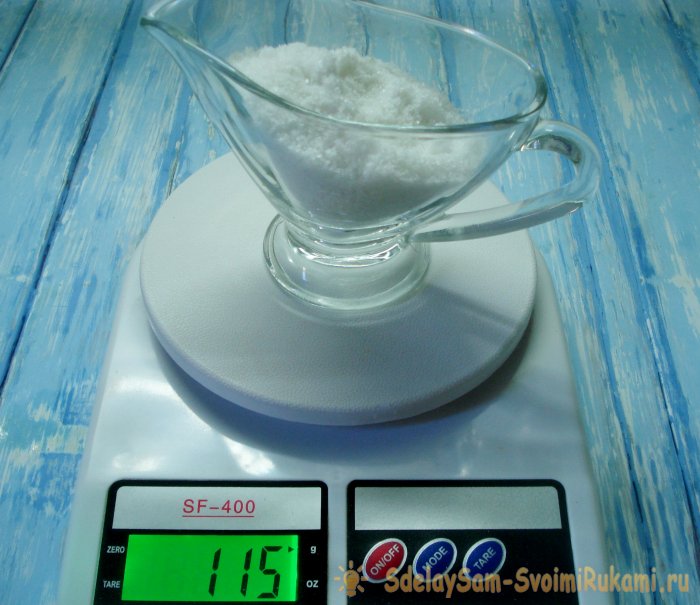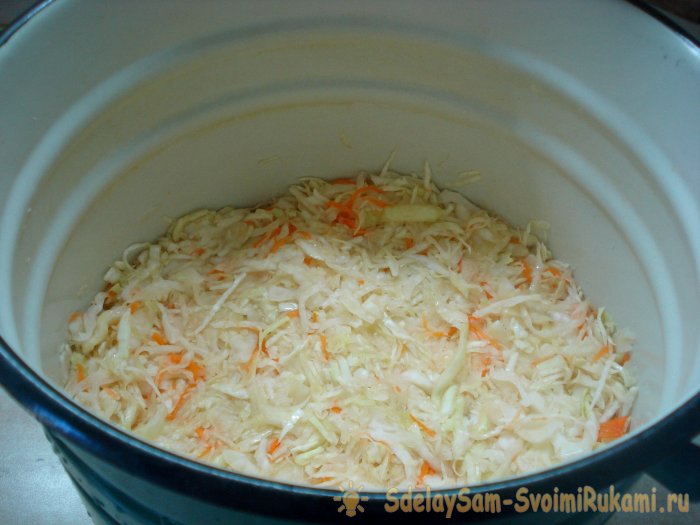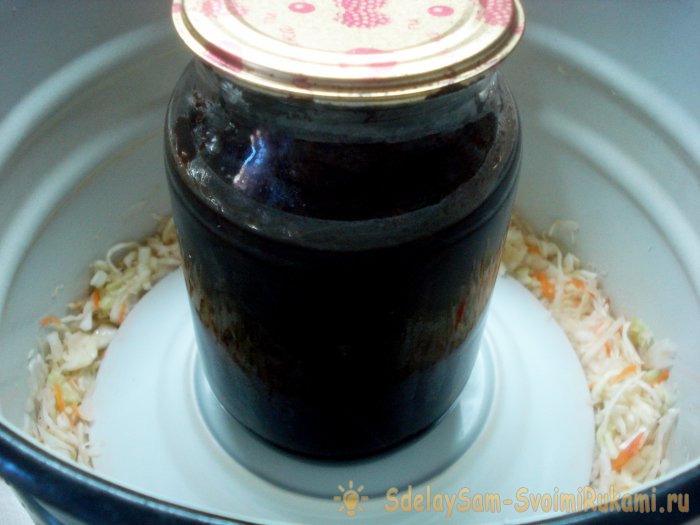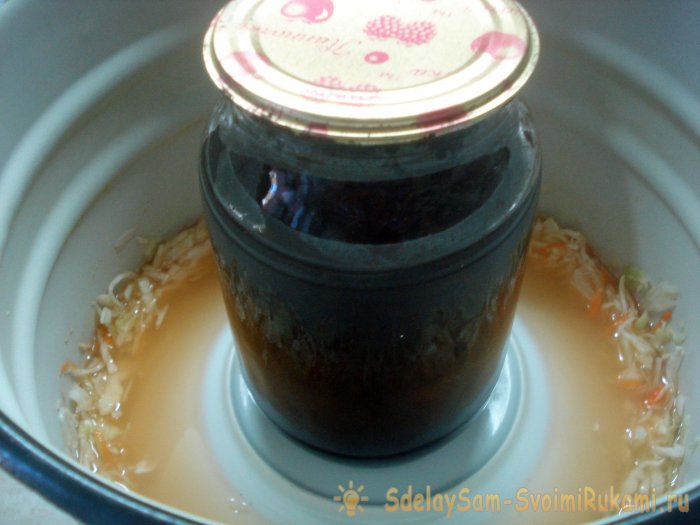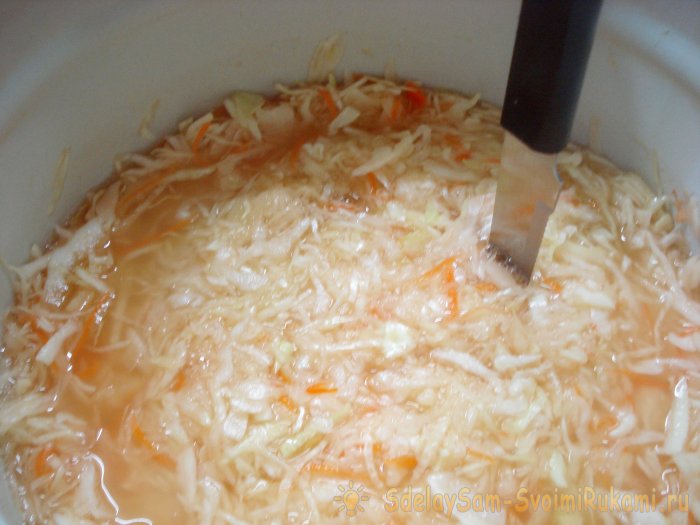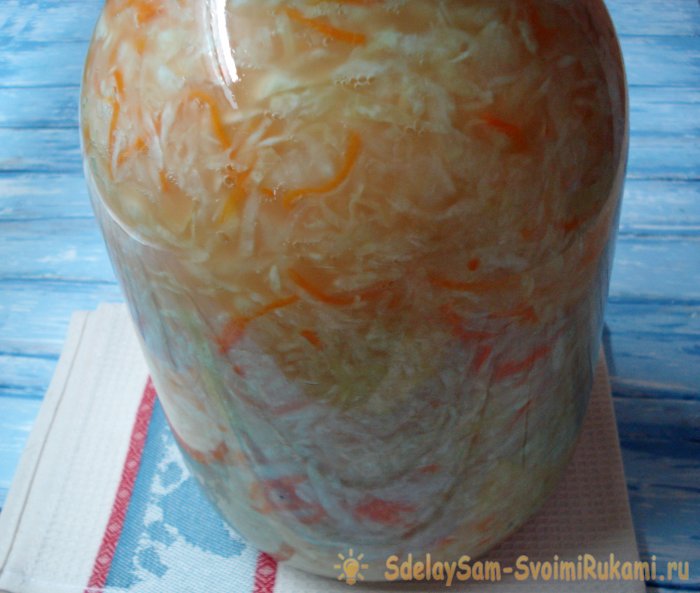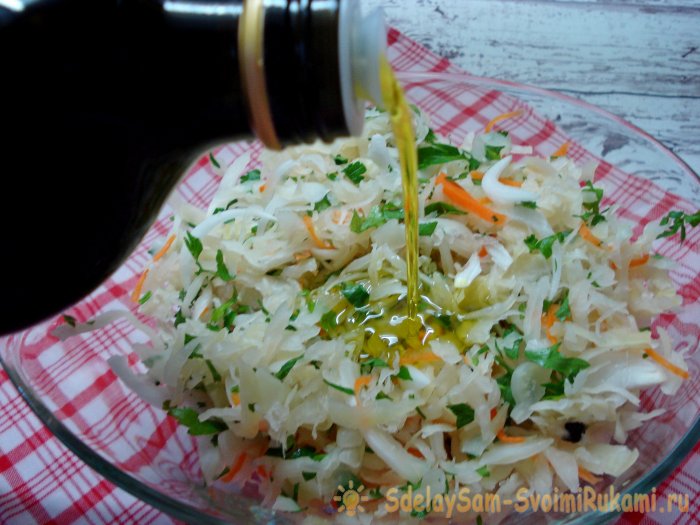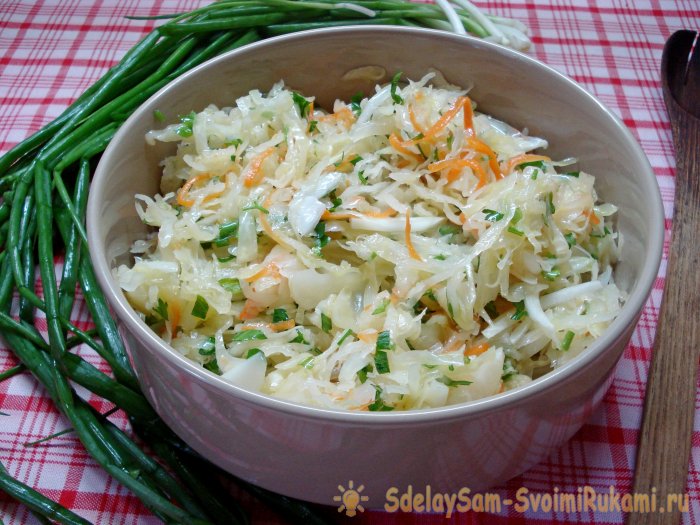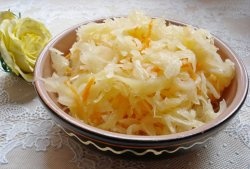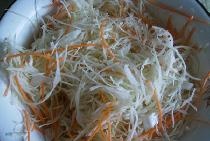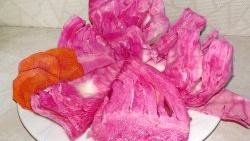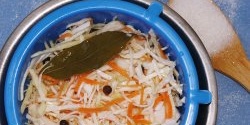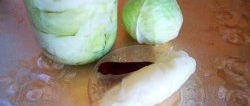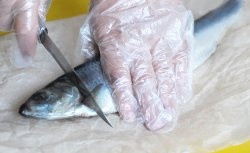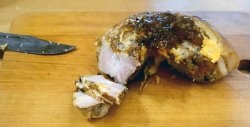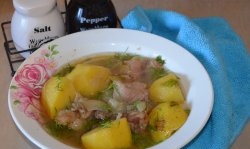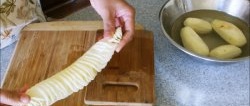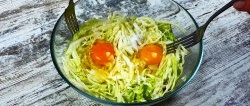Dry salting of cabbage (in its own juice)
The most natural sauerkraut is obtained using this pickling method, because the fermentation process occurs in its own juice without a gram of water. The recipe in question provides exact calculations of all components.
1. Using a special shredder, chop the cabbage.
2. Grate the carrots as for a Korean salad.
3. Place vegetables in a spacious bowl to make mixing convenient. Determine the weight without container.
4. Weigh the required amount of salt (4620 g of total weight required 115 g of salt).
5. Mix everything thoroughly and place in an enamel or glass container. Tamp the cuttings well.
6. Cover the cabbage with a plate of suitable diameter and place pressure on it.
7. Within 20 minutes. juice will come out. If the cabbage was not too juicy, then you need to increase the load and wait another half hour.
8. Thus began the fermentation process.Leave the pan at room temperature for 3-4 days, but starting from the next day after fermentation, the cabbage should be pierced with a long knife 3-4 times a day. This is necessary so that carbon dioxide comes out, and with it bitterness.
9. When fermentation is over, transfer the container with sauerkraut to a cool place or transfer the contents into 3-liter jars and refrigerate.
10. When serving, squeeze out the cabbage, add onion half rings, herbs, olive or sunflower oil. You can add a pinch of sugar.
And now, the most natural cabbage, fermented in its own juice, is ready! Such an appetizer will never be out of place, and it goes well with any menu.
Try it, bon appetit!
Ingredients:
- a) cabbage - 2 forks,
- b) carrots - 70 g for every kg of cabbage,
- c) peppercorns - 8 pcs. + laurel - 3-4 pcs.,
- d) salt - 25 g for every kg of cabbage and carrots.
The salting process lasts 3-4 days:
1. Using a special shredder, chop the cabbage.
2. Grate the carrots as for a Korean salad.
3. Place vegetables in a spacious bowl to make mixing convenient. Determine the weight without container.
4. Weigh the required amount of salt (4620 g of total weight required 115 g of salt).
5. Mix everything thoroughly and place in an enamel or glass container. Tamp the cuttings well.
6. Cover the cabbage with a plate of suitable diameter and place pressure on it.
7. Within 20 minutes. juice will come out. If the cabbage was not too juicy, then you need to increase the load and wait another half hour.
8. Thus began the fermentation process.Leave the pan at room temperature for 3-4 days, but starting from the next day after fermentation, the cabbage should be pierced with a long knife 3-4 times a day. This is necessary so that carbon dioxide comes out, and with it bitterness.
9. When fermentation is over, transfer the container with sauerkraut to a cool place or transfer the contents into 3-liter jars and refrigerate.
10. When serving, squeeze out the cabbage, add onion half rings, herbs, olive or sunflower oil. You can add a pinch of sugar.
And now, the most natural cabbage, fermented in its own juice, is ready! Such an appetizer will never be out of place, and it goes well with any menu.
Try it, bon appetit!
Similar master classes
Particularly interesting
Comments (1)

